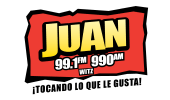Patoka Sportsman 7-10-21
Patoka Sportsman 7-10 & 7-11-21
The Patoka Lake Watershed Steering Committee encourages individuals, families, friends and service groups to help with the 14th annual Patoka Lake Clean Up on Saturday, Aug. 28.
Changes this year include morning signup at several designated boat ramps instead of a central location and free admission into the park for lunch and door prizes after the cleanup.
Participants of all ages and abilities will be assigned an area to pick up litter along the shore starting at 8 a.m. At 11 a.m., all volunteers head into the main entrance of the park for free entrance, a box lunch, door prizes and goody bags. Volunteers are asked to sign up ahead of time for lunch so check the Patoka Lake Watershed Steering Committee Facebook page or text or call 812-639-0123 and ask to be put on the Watershed email list.
Hunters can now apply for DNR reserved hunts! Applications must be submitted online by 11:59 p.m. on Aug. 9. The following hunting opportunities are currently available: dove hunts, Fish & Wildlife area (FWA) waterfowl hunts, FWA deer hunts, state park deer hunts, military and national wildlife refuge deer hunts, Indiana Private Lands Access hunts (deer, waterfowl, game birds), and Gamebird Area hunts (pheasants). For more information and the link to apply, visit on.IN.gov/reservedhunt.
The Division of Fish & Wildlife is looking for volunteers to help at the State Fair Fishin’ Pond. You can help families register onsite, teach kids how to fish with cane poles, or tie fishing knots and untangle lines.The Fishin’ Pond is open on Opening Day of the fair (Friday, July 30), then every Thursday, Saturday, and Sunday from 10 a.m. to 1 p.m. and 4 p.m. to 7 p.m. throughout the fair. The fair ends on Aug. 22. Volunteer shifts last four hours. Volunteers will receive free parking, a free State Fair ticket, and a free T-shirt. With four volunteer stations, there’s an opportunity for everyone.
Over the course of a year, wild turkeys tend to repeatedly return to the same locations to drink, feed, and rest. Can you think of a spot where you usually see wild turkey broods (hens and poults) or hens alone in the summer? These observations help DNR biologists calculate the annual wild turkey Production Index (number of poults per adult hens). The Production Index helps estimate wild turkey populations in the state and provides guidance for future management.
DNR biologists can’t collect brood observations across the state alone. In order to reach the goal of 3,000 observations this year, we need your help. If you’re interested in sharing your turkey brood observations with DNR, record observations any time from July 1 to Aug. 31. Thanks to our new, easier reporting system, recording observations takes less than five minutes; no password required.
Outdoor Indiana magazine’s July/August issue features a cover article on the Great American Rail-Trail.The Great American, as the improved-surface trail is branded by the Rails-to-Trails Conservancy, will, when finished, stretch between Washington, D.C., and Washington state. The trail includes a route through Indiana. Both the overall trail and the Hoosier portion are more than halfway finished. Subscribe for yourself at shopINstateparks.com or by calling 317-233-3046. To read article excerpts from this issue, go to OutdoorIndiana.org.
Anglers can find fish habitat structure locations and more on DNR’s new interactive reservoir habitat map.Habitat structure, such as bundles of Christmas trees, rock piles and wooden platforms, improves aquatic habitat for fish by creating areas for cover, nesting, and more. The structure also attracts bait fish and provides other feeding opportunities. The new interactive map includes project lakes, structure locations, structure types, and photos of structure types. As DNR completes habitat work in the future, information will be added to the interactive map.




